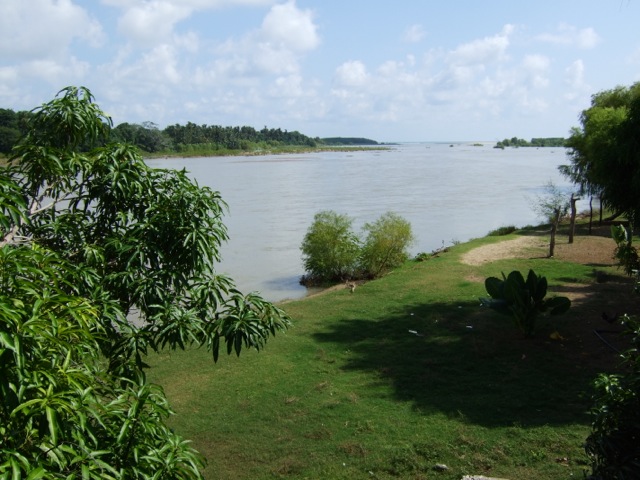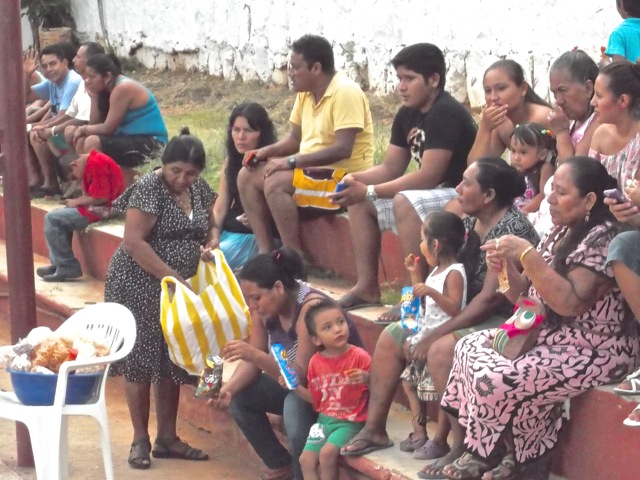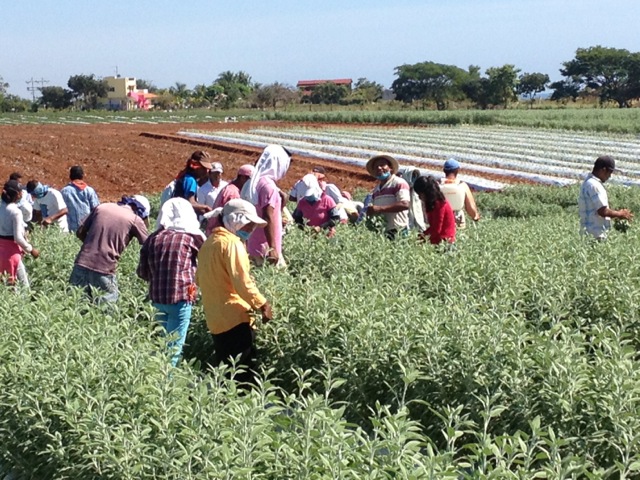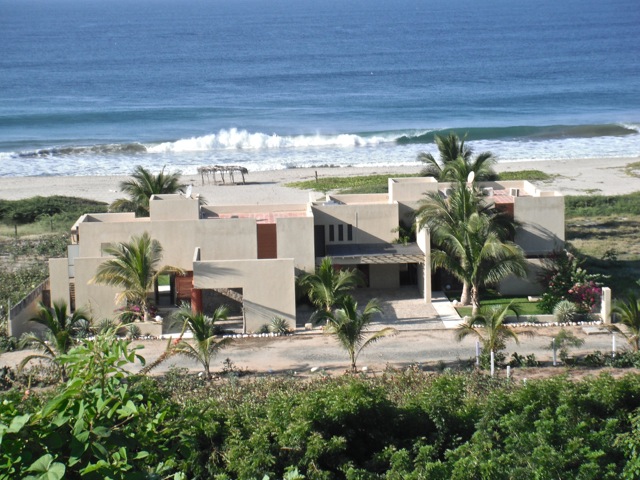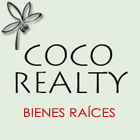Two Barras On The Colotepec River
When someone tells you they live in the Barra, it’s helpful to know which Barra they mean, since there are actually two Barras: the Barra de Colotepec (also called Barra 1) on the west bank of the Colotepec River, closer to Puerto Escondido, and the Barra de Navidad (Barra 2) on the east bank. Both sides are worth exploring for the birds, the crocodiles, and the turtles of the delta and lagoons, not to mention the spectacular river and ocean views. When I need to get away from Puerto for a few hours of relaxation, I go to one of the riverside restaurants in the Barra de Colotepec.
Back in the day, not so long ago, both Barras were also famous for their sometimes violent family feuds. In some rural areas on the coast people bemoan the good old days, but the people of the Barras are proud of their new-found peace and prosperity. The town now has a preschool, a primary and a secondary school, as well as a public health clinic. Most of the roads are paved, there are streetlights, and the water from the river is piped in. There is also a cooperative which protects the olive ridley turtles by collecting the eggs and burying them in a fenced off area on the beach.
Last year, the state of Oaxaca granted the Barra de Colotepec the status of agencia municipal of Santa María Colotepec, making it the first community in the municipio to have this title. The new agencia is now responsible for garbage collection, roads and other infrastructure. Since all the land in the municipio of Santa María Colotepec is communal, residents do not pay property tax but rather contribute their labor (servicio or tequio) to civic projects. The big festival in the Barra de Colotepec honors San Isidro the Farmer, the highpoint of which are elaborate fireworks, dances, jaripeo rodeos, and cockfights. Most of the events take place between May 13 and 15.
Bounded on the south by the Pacific, on the west by the Punta of Zicatela, and, on the other side of the highway, by Emiliano Zapata, the Barra de Colotepec is mostly devoted to agriculture, but much of the land has been broken up into lots for residential development. There are signs everywhere offering land for sale.
With 35 hectares in Barra 2 and a packaging plant in Barra 1, The Herbal Garden of Mexico is one of the largest agricultural enterprises in the area. Here Hermann David Davó grows various organic culinary herbs for export to the U.S., including basil, chives, sage, rosemary, mint, tarragon, and thyme.
Davó came here from Mexico City in 1978 to grow and buy peanuts for a shelling plant near Cuernavaca. By 1997 he had 5,000 hectares from La Barra all the way to Cuajinicuilapa on the border with Guerrero, and he was supplying 80% of the Productos Nipón’s Japanese-style peanuts as well as peanuts for Snicker bars. That was the year that hurricane Pauline ravaged the coast and all the plantations were destroyed. Nonetheless, Davó says, “The vocation of the land on the coast is for growing peanuts and cotton.” Peanuts, he says, have the advantage of being less labor intensive, and, since it is a legume, it fixes nitrates to the soil.
The Barra’s rich agricultural land has also attracted Rogelio Chávez, a Mexican- American, who last year started cultivating eight hectares of vetiver grass from plants he bought in Sola de Vega. Vetiver is used widely in India and China to protect against soil erosion and mud slides. This grass is unique because its dense root system grows downwards two to four meters in depth, thus holding the soil while also absorbing large quantities of water, according to Chávez, who sees great potential for this crop on Oaxaca’s unsteady slopes.
Silviano Cruz, the former Tourism Commissioner of Colotepec, is a native of the Barra de Colotepec who grows heliconia flowers for export on a hectare of land next to the river. Thanks to the coast’s climate and plentiful water, crops can grow here all year round. Sr. Cruz and his family also own land above the beach which they have broken up into lots to sell to people wanting to build vacation homes. You can call him at 954 540 8167 for heliconia or land.
It’s always a pleasure to spend an afternoon or evening at a riverside restaurant. El Río is a new one in the Barra de Colotepec and features a small beach from which you can walk across the river in the winter. (The river rages during the rainy season.) Be warned that on occasion there are crocodiles. Jimmy James, a veteran R&B singer from Montreal will be performing at El Río every Sunday or Monday night through April. The restaurant is open daily from 9 a.m. to 10 p.m.

